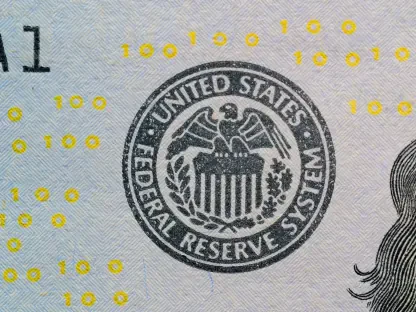Inflation continues to be a focal point in economic discussions as it influences markets, consumer decision-making, and government policies. In 2025, the inflation landscape presents a complex mix of patterns with lingering effects from past global events alongside emerging challenges. As inflation gradually moderates, it remains a powerful economic force that reshapes living costs and dictates the strategic approaches of policymakers and businesses alike. Understanding current inflation trends and projecting their impacts provide essential insights into the economic climate and equips individuals and institutions to prepare and adapt accordingly. This exploration delves deeply into how inflation has behaved post-pandemic, observing the factors contributing to its present dynamics and offering foresight into economic futures.
Current Inflation Metrics and Trends
Measuring inflation through established indicators such as the Consumer Price Index (CPI) provides crucial insights into consumer goods’ pricing patterns. Notably, current inflation rates display moderation at approximately 2.3% annually, indicating alignment with the Federal Reserve’s post-pandemic targets. This metric suggests the economy’s gradual return to anticipated benchmarks, yet prices remain significantly elevated from pre-pandemic figures, reflecting a substantial 23.6% increase since February 2020. The moderated rate is encouraging to some extent; however, inflation continues its persistent hold over various sectors, prompting ongoing vigilance among consumers and economists. Understanding the intricacies behind CPI figures, notably how different categories contribute to overall inflation, helps unravel broader economic behaviors and can support discerning informed financial strategies.
In exploring price fluctuations across different goods categories, distinct variations become apparent, painting a picture of uneven inflation impacts. While certain products, like eggs and used vehicles, have witnessed significant price drops, shelter utilities and specific foodstuffs have registered upward trends. The juxtaposition between declining and rising prices exemplifies the broad spectrum of factors influencing inflation, ranging from raw materials to geopolitical developments. Such dynamics emphasize the importance for businesses to continually assess their pricing strategies and for consumers to refine their purchasing habits and budget management approaches. The complexity of these price shifts underscores a need for smart economics, marrying statistical understanding with pragmatic action in navigating inflationary pressures effectively.
Federal Reserve Policies and Geopolitical Concerns
The Federal Reserve’s ongoing monetary policies profoundly impact inflationary dynamics, notably through interest rate adjustments meant to balance economic growth and price stability. Recent decisions to reduce interest rates over consecutive meetings reflect a strategic response to cooling inflation intended to stimulate economic activity without aggravating existing inflationary pressures. Despite these rate cuts, caution underpins the Federal Reserve’s approach, influenced heavily by uncertainties spurred by tariff policies and external economic factors. The prevalent geopolitical concerns, particularly those stemming from tariff implementations, frame much of the inflation discourse, urging policymakers to tread carefully. The ramifications of tariffs, especially those introduced during the Trump administration, continue to generate concerns among economists who anticipate potential upward pressure on imported goods prices should these tariffs remain unmitigated.
Geopolitical factors stretch beyond tariff discourse, influencing national and international economic trends through broader interactions. Businesses and policymakers must consider the intertwined effects of geopolitical tensions and market dynamics, carefully balancing strategic interests and reactive measures. Understanding the compounding effects of these interconnected issues provides a basis for developing robust economic policies capable of minimizing inflationary impacts and fostering sustainable economic growth. Such strategies demand meticulous attention to international relations, recognizing the globalized nature of today’s markets where an event in one region inevitably ripples through the global supply chain landscape. The delicate balancing act required of policymakers underscores the importance of adaptable, foresighted strategies against these ever-present uncertainties.
Price Fluctuations Across Sectors
Price volatility and sector-specific inflation manifest vividly across diverse consumer goods markets, presenting challenges and opportunities. Detailed examinations reveal specific commodities experiencing dramatic price changes, such as eggs and used vehicles seeing substantial reductions, while others, including utilities and foodstuffs, are rising. These fluctuation differences underscore how varied factors—from supply chain stresses to regulatory policies—shape price dynamics. Such expansive shifts highlight a crucial need for consumers to remain informed and proactive, implementing adaptive financial strategies to safeguard purchasing power and manage household budgets effectively. The contrast between different sectors illustrates broader economic behaviors, influencing consumer decision-making processes and paving pathways for prudent economic participation in navigating ongoing inflation challenges.
For businesses, volatility presents both obstacles and opportunities, necessitating strategic adjustments in operation models, pricing strategies, and customer engagement approaches. Being attuned to sector-specific movements and adapting influenza-responsive policies allow enterprises to mitigate adverse impacts and capitalize on emerging market trends. Continued analysis of these shifting economic landscapes helps businesses and consumers alike identify areas requiring vigilance while unlocking potential avenues for growth amidst fluctuating inflation pressures. This approach necessitates a multilateral perspective where economic entities actively survey market trends, balancing short-term instincts with long-term considerations to foster resilience against evolving economic conditions.
Economic Outcomes and Consumer Impact
Inflation’s dual impact on the economy serves as a catalyst for change, simultaneously driving and restraining economic vitality. On the one hand, moderate inflation can stimulate economic growth by prompting business expansion and elevating wages. On the other, excessive inflation undermines purchasing power, akin to an implicit reduction in income, complicating consumers’ ability to allocate resources for savings and investments. These opposing effects make inflation a nuanced force within economic landscapes, demanding careful balancing by policymakers to ensure sustainable economic development without triggering runaway inflation. For consumers, understanding these intricate dynamics becomes critical in crafting effective personal finance strategies and in leveraging available tools to navigate the financial implications of inflation adeptly.
Despite moderation trends in certain product categories, overarching inflationary pressures remain firm, drawing particular attention to shelter, insurance, and services sectors. These key areas reflect an evolution from the initial post-pandemic period characterized by supply chain disruptions chiefly governing price hikes, transitioning now into more sustained service sector demands. Such shifts in inflationary drivers underscore an ongoing transformation in the economic landscape and necessitate agile approaches in tackling persisting inflation dynamics. Anticipating the future, the interplay between these evolving economic conditions and consumer behavior becomes imperative, necessitating strategic foresight and proactive engagement amid uncertainties.
Narratives, Perspectives, and Conclusion
Inflation measurement through indicators such as the Consumer Price Index (CPI) is essential for understanding the trends in consumer goods pricing. By examining the current CPI data, we see inflation rates have moderated to roughly 2.3% per year, which aligns closely with the Federal Reserve’s targets set post-pandemic. The economy is slowly returning to expected benchmarks, but it’s important to note that prices remain markedly higher than before the pandemic—showing a rise of 23.6% since February 2020. This moderated inflation rate offers some optimism, yet it continues to assert pressure across multiple sectors, necessitating consumers and economists to remain vigilant. Delving into the CPI, particularly the specific categories that contribute to overall inflation, sheds light on broader economic behaviors and aids in crafting informed financial strategies. Exploring price changes across various goods reveals uneven impacts of inflation. Certain goods like eggs and used cars have seen significant price drops, yet shelter utilities and some food items show increasing trends. These fluctuations highlight the complex factors driving inflation, such as raw material costs and geopolitical tensions. This dynamic landscape underscores the necessity for businesses to reassess pricing strategies and for consumers to adjust their spending habits. Navigating these complexities calls for a blend of statistical comprehension and practical action to effectively manage inflationary pressures.









